
Baking is just like chemistry class, except you get to eat the results. Today, we narrow in on one ingredient in particular: sugar. More than just a sweetener, sugar serves several other purposes in baking. For one, it keeps our baked goods moist thanks to its hygroscopic properties.
Dry Ingredient with Wet Properties: Sugar Is Hygroscopic
Last month, I discussed hygroscopy and what happens when a hygroscopic material absorbs and retains moisture. I mentioned that when certain materials get wet, they absorb the moisture and swell up. Sugar is one such material, but as you’ll see, not all sugars are the same.
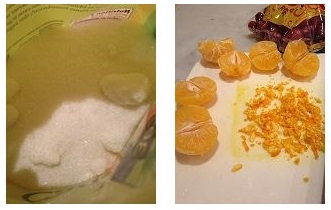
Left: Granulated sugar, sucrose. Right: Clementines, which contain fructose.
Different Types of Sugars
Chefs have plenty of options to choose from when it comes to sweeteners. In The Pastry Chef’s Apprentice, author Mitch Stamm provides a good overview of the various types of sugars in the “Sweeteners” chapter. He lists them in order of sweetness level, with sucrose (table sugar) as the control.
Below is an excerpt of Stamm’s table:
| Sweetener |
Sweetness Value |
|---|---|
| Fructose |
172 |
| Invert syrups |
102 |
| Sucrose |
100 |
| High-fructose corn syrup |
100 |
| Brown sugar |
97 |
| Powdered sugar |
97 |
| Honey |
80 |
| Molasses |
70 |
Some of the sweeteners listed in The Pastry Chef’s Apprentice.
Is Brown Sugar More Hygroscopic Than White Sugar?
Brown sugar is just granulated white sugar with the molasses added to it. You will typically find two varieties of brown sugar: dark and light. The dark variety contains about 6.5% molasses by weight, while the light contains roughly 3.5%. As we can see in the table above, the molasses reduces the sweetness of brown sugar ever so slightly as compared to white sugar (listed as sucrose above).
A quick online search unveils a lot of debate around whether or not you can substitute brown and white sugar interchangeably when baking. Some say they are completely interchangeable, others say you need to alter the amounts when substituting one for the other. Many state personal preferences on when to use which type of sugar (e.g., “Use white for cake!”, “Use brown for breads!”, etc.)
I’ll take that as my cue to head to the kitchen. Let’s bake and investigate.
Testing the Theory with Banana Bread
One resource suggests that brown sugar would make breads, such as banana or zucchini bread, more moist than if you made them with white sugar. I found a recipe for vegan banana bread a while back, which I thought was very good. The original recipe calls for white sugar and I do not remember thinking it felt dry the last time I made it. After reading up on the hygroscopy of sugar and the brown vs. white sugar discussions, this recipe seemed like a good place to start testing out the theory.
Since the original recipe was not dry, I figured that by substituting the white sugar for the same amount of brown sugar, which is more hygroscopic, the banana bread would be excessively moist.
The Recipe
The original vegan banana bread recipe is from www.foodnetwork.com. As usual, I substituted the all-purpose flour with whole wheat flour, so here are the ingredients for my slightly modified version:
1 1/4 Cups whole wheat flour
1 Teaspoon baking soda
1/2 Teaspoon kosher salt
3 Very ripe medium bananas, mashed
3/4 Cup sugar (Note: I used light brown sugar for Version 1 and granulated sugar for Version 2)
1/2 Cup plain soy milk yogurt
1/2 Cup canola oil
1 Teaspoon pure vanilla extract
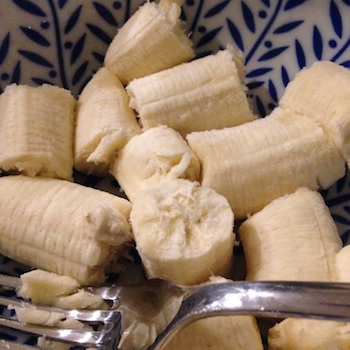
Bananas “in the mashing”.
Some Steps in the Baking Process
I made the two versions back-to-back, starting with the brown sugar banana bread. I took photos throughout the process to share with you. Version 1 is shown on the left and Version 2 on the right. Again, the only difference between the two is the type of sugar, all else is held equal (as best I could; not all parts of the process were constant, as I’m a home chef working in my kitchen as opposed to a food scientist following a standardized factory process).
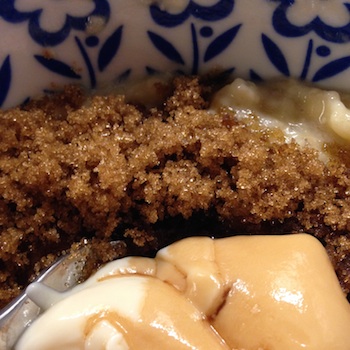
Version 1: Mixing brown sugar into the other ingredients.
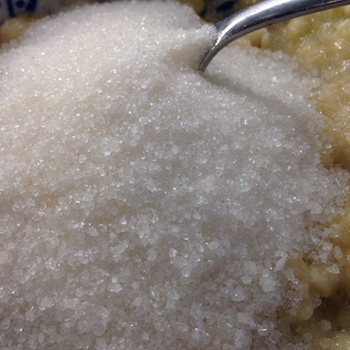
Version 2: Adding white sugar instead.
Naturally, the batter containing brown sugar was darker than the one containing white sugar. That’s because of the molasses.
Here they are in the greased and floured pan before going into the oven:
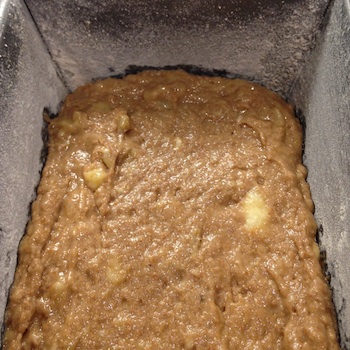
Banana bread batter: Version 1, brown sugar.
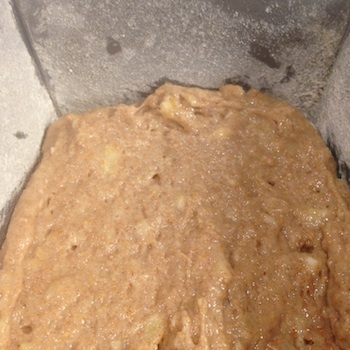
Banana bread batter: Version 2, white sugar.
Once out of the 350°F oven, the difference in color was harder to distinguish, but still visible.
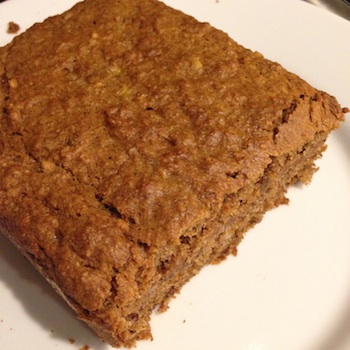
Finished product: Version 1, brown sugar.
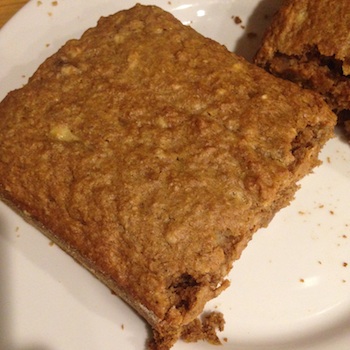
Finished product: Version 2, white sugar.
Next up: Taste tests.
Inconclusive Results?
During several rounds of taste tests, it was very hard to tell the difference between the two breads in terms of moisture. After each bite, the conclusion was always the same “Ah, now, this is the more moist bread.” In other words, there was no distinguishable difference. What I did find, though, was a slight difference in both color and flavor between the two versions of the banana bread.
The brown sugar version was slightly darker and the flavor had more depth and “roundness” to it.
But, we can’t just base the results on one person’s experience, so I brought in the two contenders to work and shared them with some fellow COMSOL employees. The results surprised me.
A Banana Bread Focus Group
When feeding the bread to a small group of coworkers (ten, to be exact), we received mixed responses.
Moistness
Among the group (not including me), three detected no difference in moisture, six claimed the brown sugar version was more moist, and one said the bread made with white sugar was more moist. Two out of the ten coworkers tried the breads in a blind taste test. Interestingly enough, they disagreed over which one was more moist.
Flavor
While the main focus was on the moisture level, it seems impossible to discuss baked goods without also comparing the flavor. As we learned earlier, brown sugar is ever so slightly less sweet than white sugar. I personally noticed a slight difference in flavor, but not everyone in the focus group agreed.
The majority either could not tell a difference in sweetness or simply said “They were equally delicious,” which I take to mean the two were indistinguishable. Of those who noticed a difference, two people suggested the white sugar was sweeter. Two people said the banana bread made with brown sugar simply tasted better and one person preferred white sugar.
Taste Test Comments
Here are the comments from our two blind testers:
Matt Milhomme: “My vegetarian super senses determined that the brown sugar bread was more moist. There was no noticeable difference in flavor.”
Jessica Roy Mitchell: “[…] I was actually surprised by the results. I thought the white sugar one was sweeter and more moist. I also thought it might have been more banana flavored. That said, I preferred the sweetness level of the brown sugar flavored bread. It was less sweet overall and I think had less of the ‘back of the tongue’ kinda [sic] sweetness.”
Next up, I’ll try something more dramatic to see if the results are more clear-cut, like cupcakes or muffins. Nothing says “Happy birthday!” quite like 12 soggy miniature cakes. Or would they turn out alright anyway?
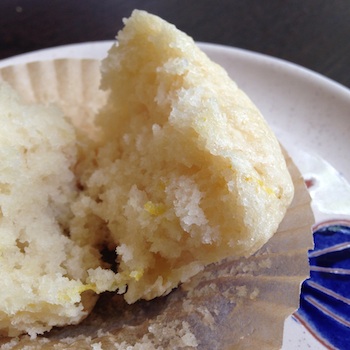



Comments (0)